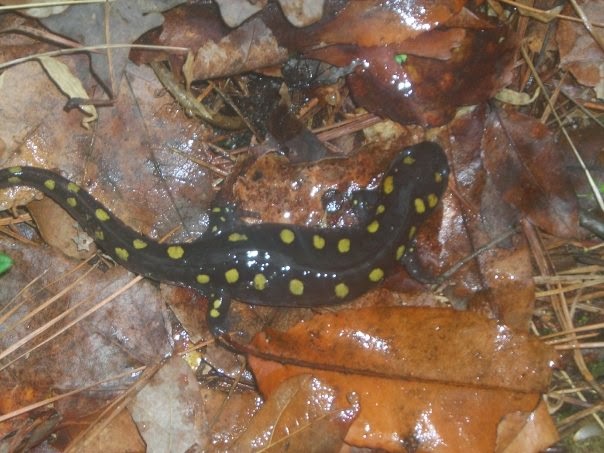 |
| Spotted Salamander Egg Mass |
The Spotted Salamander will have either a lot of orange and/or yellow spots or very little spotting. It dines on insects and other small critters. Typically it spends much of the year underground, but after a warm rainstorm during the late winter to early spring, will come above ground and migrate to nearby temporal pools.
 |
| Spotted Salamander |
In the pools, according to Amphibians and Reptiles of the Carolinas and Virginia by Jeffrey C. Beane, Alvin L. Braswell, Joseph C. Mitchell, et al. "Up to 350 eggs are laid in clear to opaque, jellylike masses attached to sticks and stems in the water." The salamanders will soon after return underground.
 | |||||
| Temporary Pool |
 | |||
| Spotted Salamander Eggs from temporary pool pictured above |
 | ||
| Spotted Salamander Egg Mass attached to a stick |
Eventually the eggs hatch into larvae and then later, the larvae transforms into a salamander. Pictured below is a morphed Spotted Salamander.
 |
| Photo by ME. |
In this blog I am focusing on the eggs, but I would encourage you the reader to do some research on your own and learn more
about the larvae and about the spotted salamander in general as it is a very interesting species!
Photos are by ME.